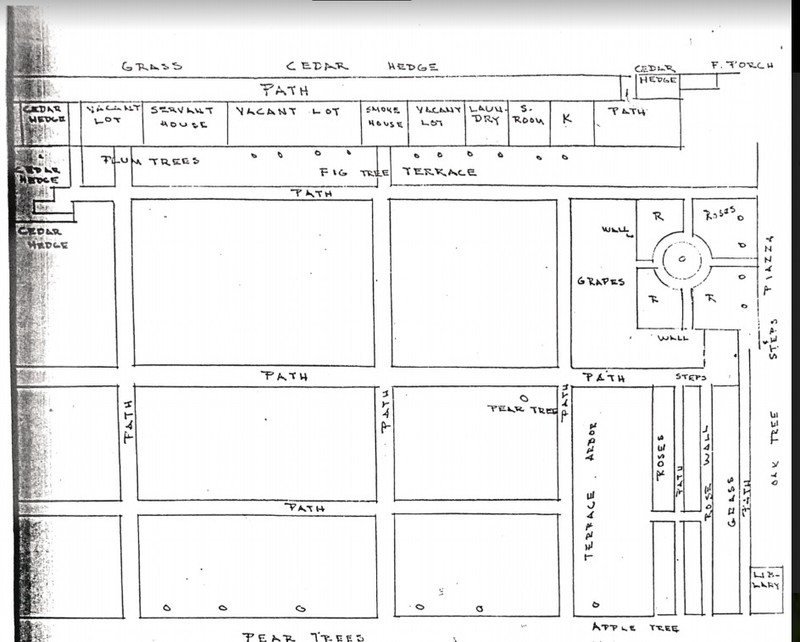Archaeological Site: Cooks Room
Introduction
Author-Uploaded Audio
00:00 / 00:00
Listen to a narration of this entry's description by Fort Hill User.
Text-to-speech Audio
Images
Patrick Calhoun, son of A.P. Calhoun, Sketch of Property

Backstory and Context
Author-Uploaded Audio
00:00 / 00:00
Listen to a narration of this entry's description by Fort Hill User.
Text-to-speech Audio
Nelly was not born at Fort Hill; she was purchased in 1848 by John C. Calhoun’s wife, Floride. Around 1854, Nelly gave birth to her son Andy, and they both appeared often in the personal correspondence of both the Calhoun and Clemson families. Nelly became the personal enslaved domestic worker to Floride Calhoun, and she also served as the cook at Fort Hill. In one letter written by Floride Calhoun, she stated: “I trust her with the keys, as she has been accustomed to it all her life.”
In 1854, when A.P. Calhoun and his wife, Margaret, moved their family to Fort Hill from the plantation in Alabama, Nelly was in Florida with Kate Putnam Calhoun, Floride’s daughter-in-law. Nelly served as a wet nurse for Kate Putnam’s two infants.
Once A.P. and his family moved to Fort Hill from Alabama, Floride moved to her new home, MiCasa, in Pendleton, S.C. During this time of transition, Christy became the enslaved cook at Fort Hill through emancipation in the summer of 1865, and she took residence in the Cook’s Room. She had use of Nelly’s “feather bed, bedstead, table, and two chairs.” When Nelly returned to South Carolina from Florida, she was forbidden by Margaret Calhoun to return to Fort Hill, even to pick up her belongings. Fluoride Calhoun had to arrange for Nelly’s furniture and other items to be moved to MiCasa.
Cite This Entry
Hiott, Will and Caroline M. Ross on behalf of Fort Hill. "Archaeological Site: Cooks Room." Clio: Your Guide to History. August 7, 2020. Accessed April 1, 2025. https://theclio.com/entry/68030/tour/17
Sources
“The African American Experience at Fort Hill | Clemson University, South Carolina,” accessed May 21, 2020, https://www.clemson.edu/about/history/properties/fort-hill/african-americans1/.
“Story | Archaeological Field School at Fort Hill | South Carolina ETV,” accessed May 21, 2020, https://www.scetv.org/stories/local/2019/archaeological-field-school-fort-hill.
Archaeological Field School at Fort Hill, accessed May 21, 2020, https://cdnapisec.kaltura.com:443/index.php/extwidget/preview/partner_id/954571/uiconf_id/29461131/entry_id/1_yeo2o4wv/embed/dynamic.
images courtesy of Fort Hill

